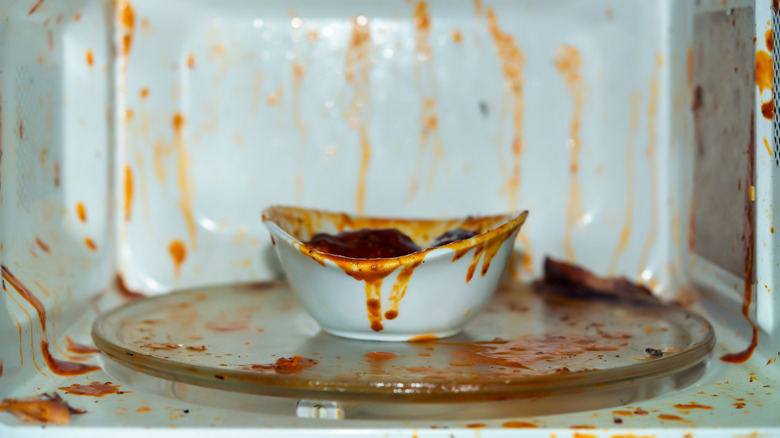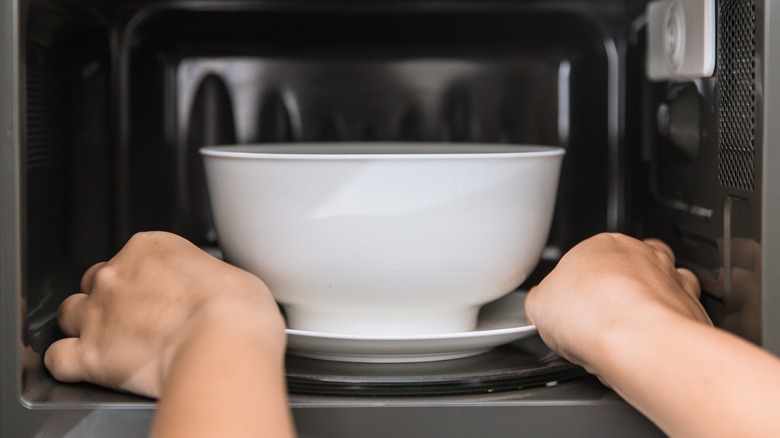What Makes Food 'Erupt' In Your Microwave?
It's never easy or fun to clean a dirty microwave oven, so it's extra upsetting when some food you're heating up erupts and bits of food and sauce splatter all over the interior of the appliance. With about 90% of American households owning a microwave, according to Allied Market Research, that frustration is felt by many.
To prevent big microwave messes from happening, it's important to understand how a microwave works. As the name implies, the appliance uses microwaves (radio waves) that are created by a small device called a magnetron, according to Home Appliance Geek. The larger the magnetron, the more powerful the microwave is. When the food is placed inside the microwave to be heated up, the water, fat, and sugar in the food absorb the waves, according to Home Appliance Geek. This absorption resulted in the small particles in the food jumping, causing heat. Conversely, glass, paper, ceramics, and plastic do not absorb radio waves.
How to prevent a messy eruption
An eruption of food in a microwave happens when something like instant coffee, tea, or gelatin is added to a liquid that is already too hot, according to the USDA. The biggest culprit is water, which will erupt if it gets higher than its boiling point. Microwaving water needs to be done with caution, according to the USDA, because something as simple as using a very clean mug (such as one just taken from the dishwasher) poses a bigger risk of erupting. Even taking the mug of water from the microwave to a table poses a larger chance of eruption because the movement of superheated water is shown to have a more significant chance of boiling over.
The amount of water contained in the food that is being microwaved also plays a role, per Britannica. As the food is heated in the microwave, the water it contains expands and becomes steam. If that steam has no way to escape, the pressure will build, and the food will explode, according to Britannica. (That's why it's important to poke holes in a potato or peel back a container's plastic layer, so the steam has a means of escape.) The USDA offers a few other tips on preventing eruptions: use a container with sloping walls, place a microwaveable spoon in the container while it's in the microwave, and stir frequently.

